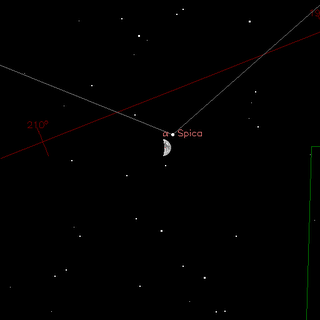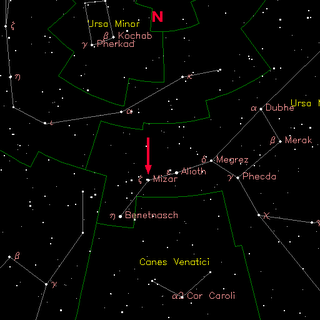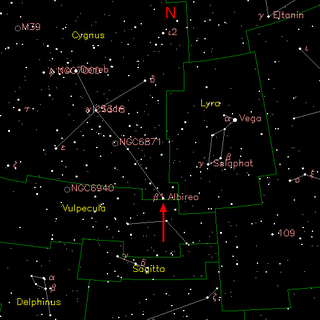31 July 2006 - Tonight was not really a planned session for personal observing. I was at a meeting when I became distracted by the fact that, for the first time in days, the sky was clear. How could I concentrate on the meeting while the heavens were waiting? So, I left the meeting, obstensibly to try some experiments with a small digital camera (a Mercury CyberPix S-550V, pretty much just an aim-&-shoot) through my old 60mm 450mm fl short tube refractor "Bianca". But there was something else I had been wanting to see; our Moon sitting just south of the bright star Spica in the constellation Virgo. Professor Jim Kaler's website has some great information on the star, as well as many others.
First, let's talk about my little camera experiment. Was it a success? Well... yes and no. Yes, it was successful in that it showed that the little work around I found for digital cameras worked (using a small tripod to hold the camera to the eyepiece). The images, however, were overexposed. The sensor that sets exposure does not aim into the telescope, and was pointing towards darkness. The camera's response was to increase exposure time. So, you get this...

That was the best image of the night.
Still, all was not wasted. I spent a number of minutes just looking at the Moon sitting just under Spica. It was an amazing contrast. Spica is the 16th brightest star in the night sky, and was easily holding its own against our obviously much brighter Moon (not that the Moon would actually be brighter than a star; Spica is around 260 light years away, while the Moon is 238,000 miles/383,000 km). The other stars really stood out tonight as well, the rain cleansed air being particularly clear. I spied Jupiter and the Galilean satellites. A few minutes later, I swung Bianca around and viewed Albireo.
But it was the wonderful sight of the Moon sitting in such proximity of Spica that really made the night, as our nearest celestial neighbor visited a maiden, high in the southern skies.
First, let's talk about my little camera experiment. Was it a success? Well... yes and no. Yes, it was successful in that it showed that the little work around I found for digital cameras worked (using a small tripod to hold the camera to the eyepiece). The images, however, were overexposed. The sensor that sets exposure does not aim into the telescope, and was pointing towards darkness. The camera's response was to increase exposure time. So, you get this...

That was the best image of the night.
Still, all was not wasted. I spent a number of minutes just looking at the Moon sitting just under Spica. It was an amazing contrast. Spica is the 16th brightest star in the night sky, and was easily holding its own against our obviously much brighter Moon (not that the Moon would actually be brighter than a star; Spica is around 260 light years away, while the Moon is 238,000 miles/383,000 km). The other stars really stood out tonight as well, the rain cleansed air being particularly clear. I spied Jupiter and the Galilean satellites. A few minutes later, I swung Bianca around and viewed Albireo.
But it was the wonderful sight of the Moon sitting in such proximity of Spica that really made the night, as our nearest celestial neighbor visited a maiden, high in the southern skies.







